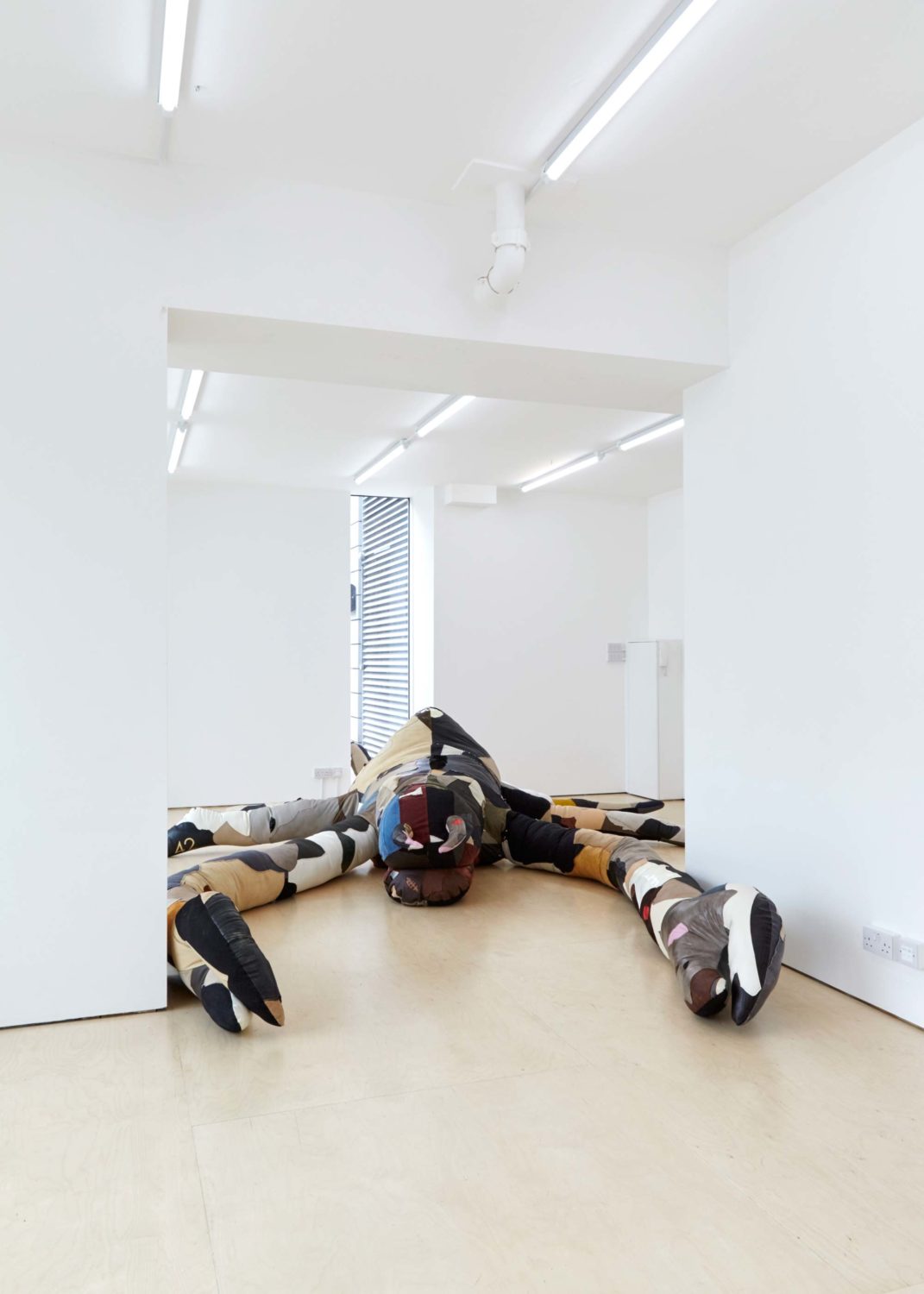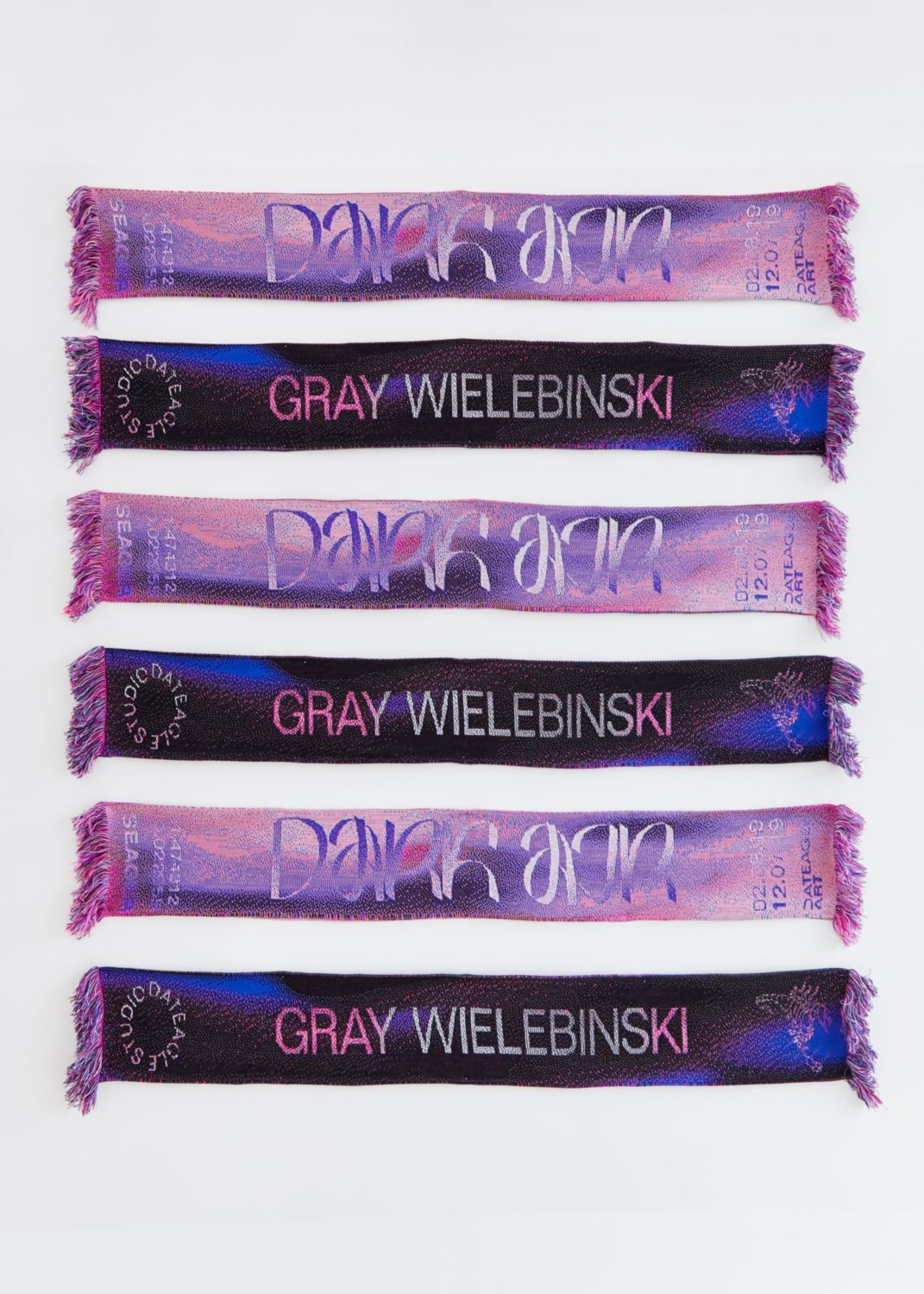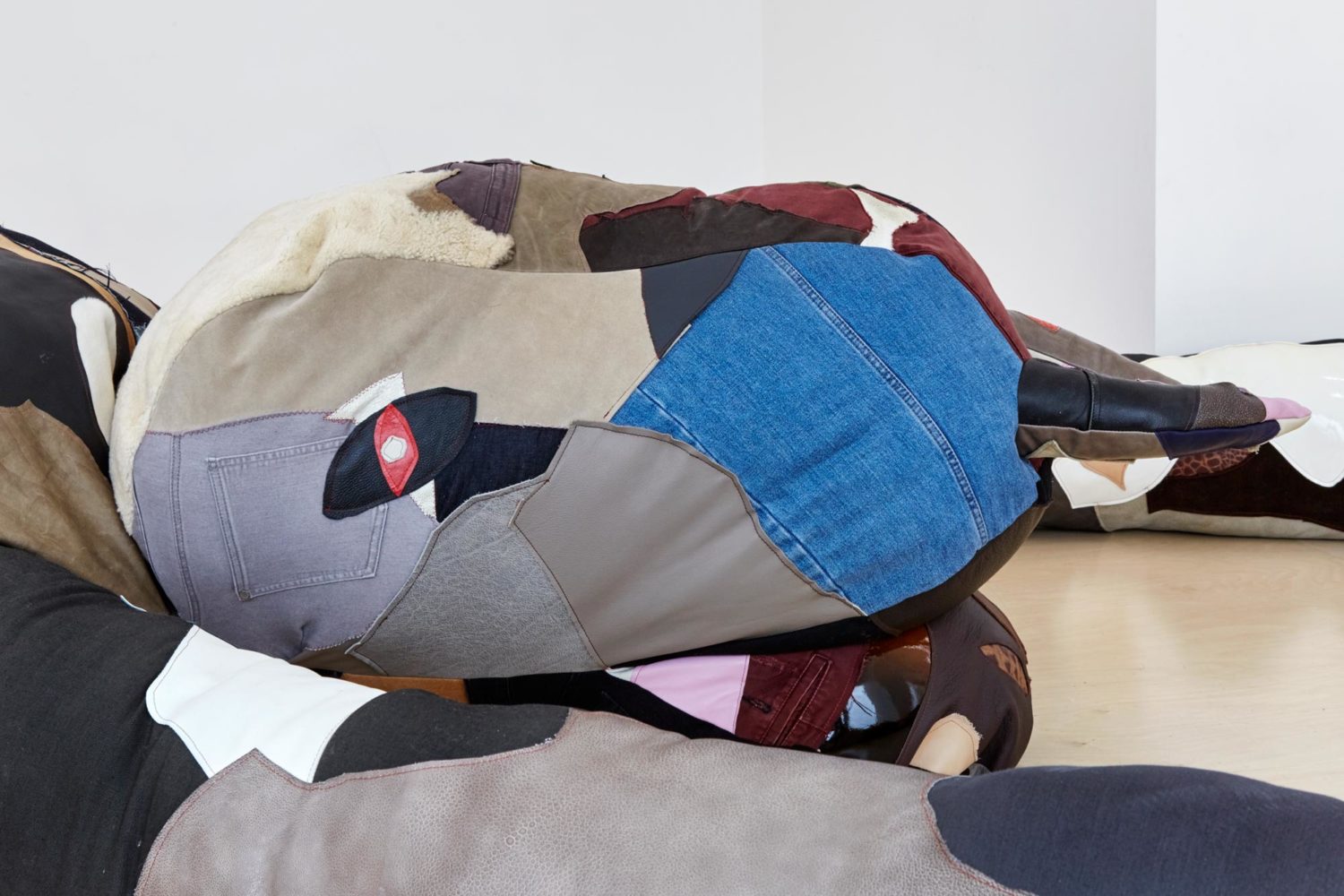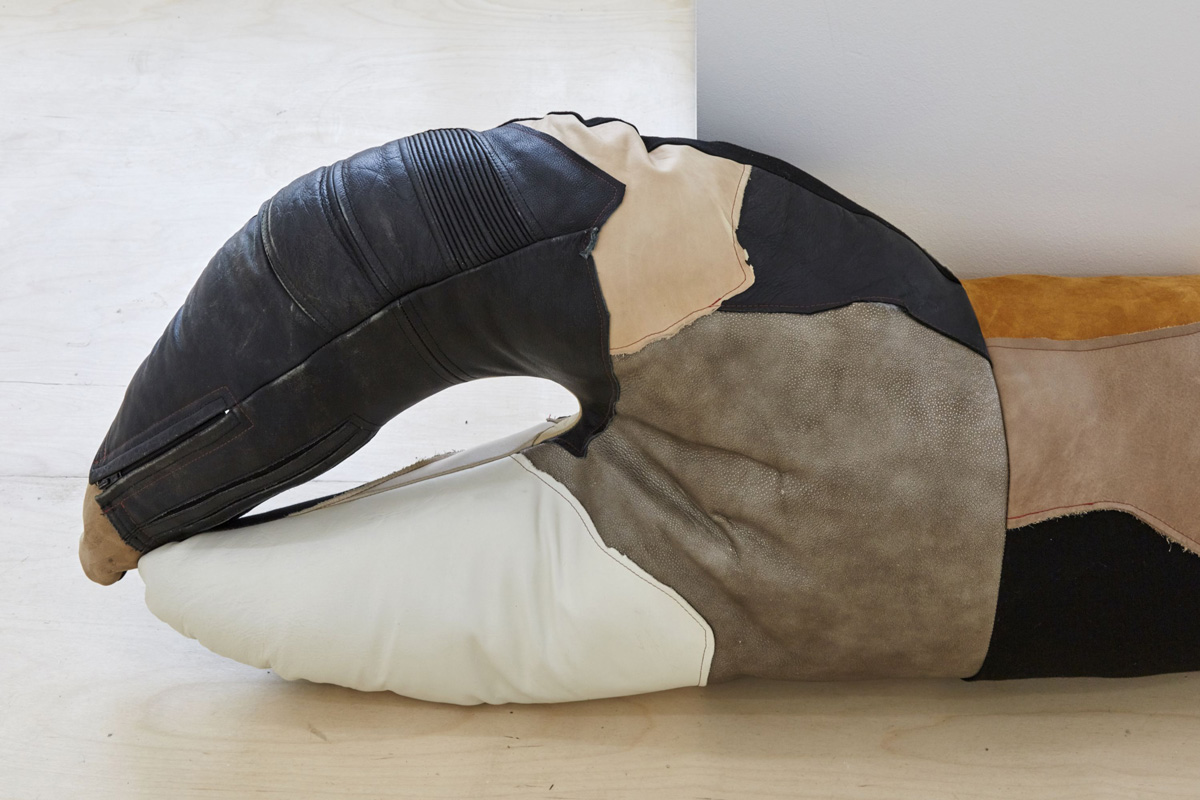Interview: Gray Wielebinski On Investigating Myth Making & Gender In Their New Show ‘Dark Air’
By Something CuratedCurrently open and running until 2 August 2019 at Deptford’s newly established SEAGER Gallery, Dark Air, curated by Martin Mayorga and Vanessa Murrell from DATEAGLE ART, platforms the work of American artist and recent Slade graduate, Gray Wielebinski. Wielebinski’s work focuses on the transitory space that exists between concrete labels and what these ambiguous lacunae can reveal. Practices and faiths are opened for dissection, while Americana, memorabilia and the art world itself are revealed as forms of myth making. Through the show, the artist seeks to explore their own nuanced relationship with their body, gender, socialisation and art whilst rejecting the strict narrative of “before and after” dualities. To learn more about Wielebinski’s work and the new exhibition, Something Curated spoke with the artist.

Something
Curated: Tell us a little about your background.
Gray
Wielebinski: I grew up in Dallas,
Texas and then moved to LA for several years before I moved to London to get an
MFA at the Slade, which I finished in 2018. Texas has this certain and very
potent mythologising of itself and a specific history and culture that is
engrained in you as a young kid, and LA of course has its own relationship to
fantasy/story telling and myth making via Hollywood and through the city’s
weird history itself. I think that my time growing up in both of these places either
influenced or exacerbated an already deep interest not only in storytelling,
but a desire to interrogate where stories come from, how they are able to live
and grow, who is allowed to tell them and what power they might wield.
SC: Where
did the title of your show, Dark Air,
come from?
In part because I like to draw from various
sources and explore many simultaneous themes or ideas in my work, I like to
come up with a title that has multiple meanings, while at the same time is
ambiguous enough for the audience to play with it or interpret it in their own
ways. On a pretty surface/visual level, it captures the idea of “dark air”
itself, like a fog that can hide or conceal the path ahead, or has the
potential to discombobulate and dissociate – literal fog or a foggy headspace.
I like the idea that fog or nightfall in and of itself is a “natural”
occurrence that we might project an ominousness onto, or potentially blame for
our misfortunes or for diverting our paths, but ultimately its something that
doesn’t “think” of us at all-we are irrelevant to it, therefore we are the ones
making meaning from it.
This ties in a bit as well to our relationship to animals, and how we project meanings onto them from our own perspective or anthropomorphise them in our image, they become symbols or icons of something and we may miss out on an opportunity to be awed or left wondering. I was also thinking a bit about the science fiction novel Solaris by Stanislaw Lem, where it subverts a more typical trope of space exploration as a colonization narrative, and in fact is ultimately about the astronauts’ inability to cope, physically and emotionally, with this dark ocean planet. It’s about our complete inability to understand or fathom the extra-terrestrial (and maybe even our own subconscious).
I was also thinking about the word “humbug” which is used to describe the wizard, who ultimately is revealed to just be a “man behind a curtain,” in The Wizard of Oz. “Humbug” means something like “spectacle” or “hoax,” often referring to someone or something with an unjustified reputation, and “dark air” comes from an Old Norse translation of “hum”, where “bugges”, is a variant of bogey, meaning “apparition” or “ghost.” The work is not meant to be a total humbug or a straw man necessarily but it does invert the expectations and “purpose” of the threshold figure and, I hope, rather than blocks your way might put you on a new path altogether.

SC: How has it been working with the curators, Martin Mayorga and Vanessa Murrell?
It’s been really great working with Martin and Vanessa, to be honest, we have been on the same page on almost all aspects of the show from the beginning. When we first met to discuss our ideas for the show, I explained that I really wanted to just have one large, central work (which is something I really haven’t done before, and in fact minimalism is not really my strong suit) which it turns out they also were thinking about. From there, they were just very sensitive to what I wanted to do with the installation: I laid out my ideas and where I was coming from with the work and my impetus for making it and the environment I wanted to create with the show for the audience, and they really worked hard to just to listen and understand genuinely and then would give me their own input or ideas or help me make mine manifest in ways that felt very thoughtful and in line with my wishes.
They are also hyper organised and straightforward with communication, which I think is really important in a working relationship. For example, when I was combing through our first contract they had written up between me, them, and the gallery, one of the clauses was that I absolutely must be referred to using they/them pronouns and nothing else under any circumstances in all correspondence, press, social media, exhibition documents, etc. Of course, this should go without saying to refer to people using their correct pronouns, but sadly it’s not always the case, so I found it actually very reassuring and quite funny to be honest…it was a nice surprise, I wish I could have that in writing and signed by everyone in my life!
SC: Could you expand on the thinking behind the Sphinx-Scorpion figure central to the exhibition?
I often incorporate or start from an idea that blends together different elements of mythologies and I’m also often invested in recontextualising and interrogating them in a contemporary context. In doing so, hoping to bring into question the biases and power dynamics/hierarchies that are often involved in storytelling and myth making, both in the past and the present, and how that has the potential to shape our futures. On the one hand, the scorpion has connotations of the “Wild West” and cowboy narratives and “untamed” frontiers. They can be dangerous but they are actually nocturnal creatures that only attack when provoked. There’s also the myth of Scorpius (the scorpion is immortalised by Zeus when it kills Orion for attempting to kill every beast on earth) as well as the myths of aqrabuamelu or girtablilu which are “Scorpion Men” that guard the passage of the sun.
This particularly bridges the scorpion to the symbolism of the Sphinx, a creature that has variations throughout mythologies but is meant to be a “threshold” figure that might guard important tombs or monuments. The Sphinx also quite famously was depicted as a figure who guarded the city of Thebes with an impossible riddle, and threw herself to her death when Oedipus finally solved it. My threshold/guardian creature though becomes the final destination or the main event rather than it’s usual role guarding or standing in the way of one’s real goal. I was hoping to subvert and/or reconsider these epic tales and understandings of the “hero’s journey” and prescribed or perceived paths and obstacles and notions of spectacular transformation over that of gradual, varied, constant upheaval and change.

Personally, I am also thinking about gender and transitioning and the relationship between insular and exterior identities and how to shift narratives from a “before” and “after” to a whole other way of being and experiencing and becoming oneself on a daily basis. In this way, while I may be playing with expectations or symbols and their meanings, on a personal level the work itself and its scale became a sort of grand gesture and cathartic way of creating a physical offering or totem to my own feelings of grappling with a perceived “obstacle” in my way, of feeling like I am on the precipice of a huge change/transformation, and realising that, in actuality, we are constantly creating and recreating ourselves every day and I can work to subvert binary expectations by embracing the uncertainty and precariousness as well. The journey never really ends.
SC: What draws you to the varied textiles you work with?
Collage has always been integral to my practice, I’ve always been drawn to the potential power it has to subvert or recreate contexts or meanings, often from what already exists. So, when I started moving towards sculptural work, textiles became a really fruitful way to work with materials that already have specific meanings or baggage or references, whether it’s culturally or iconographically or sensorialy.
For this piece in particular, I collected worn jeans, sportswear, motorcycle gear, off cuts of leather and I even cut up and collected leather from couches that were put out on the street. The use of recycled or worn textiles that have already lived another life adds to this idea of imposing individual or personal meaning onto objects or materials. Furthermore, there’s histories to why we wear things-or don’t wear certain things-clothing can signify individuality or conformity or community and belonging, it can be a complex language that only some can decipher or sometimes its meant to be simple and direct.
More recently, I’ve been thinking about how clothing has been a really integral part of my own identity making and reckoning and maybe even a way of finding my way back to myself while at the same time letting myself have multiplicity and move forward. As I am both “putting together” the pieces of my identity as a trans person, and reckoning with these complex relationships between an outside and an inside and projections from others and internal desires, ultimately for me its been about facing these things and processing them in order to get to a point where instead of discerning where and when and how I was or am being the “real me”, I can let them all be me and then some.

Class, race, body type for example can also influence one’s relationship to clothing and the limitations or expectations thrust upon you, what you are “allowed” to wear or what liberties people take in assessing or judging you or projecting meanings onto you. Furthermore, how might we internalize these “rules” one way or another. To not care or think about what you wear is a a privilege not many people have when we get down to it, and in that sense, clothing and textiles are heavily charged, politically, emotionally, symbolically, and I’m grappling with that aspect as well in my choice of materials.
How do we express ourselves when we are expected to be in certain uniforms or follow certain rules of what to wear or how to be? In what ways might what we wear belie or subvert a shorthand “reading” of our bodies, and in what ways might it conform or confirm the status quo? in what ways do we give ourselves limits when the possibilities are endless? How might we signal to one another that we understand, that you aren’t alone, that we belong? That we understand a history, or that we want to experiment with or change our presents and our futures? Who is allowed to and who isn’t, and how might it feel when given the chance?
SC: What do you think is unique about London’s art community?
I think that on a macro level the machinations of the “art world” and how it functions on a global scale can really get you down and feel pretty isolating and bizarre at best, and London isn’t immune to this, but on a personal level both in terms of the every day and in the grand scheme of things, its been the people I’ve had the fortune of meeting and getting to know and work with even in my relatively short time so far. I feel very lucky and inspired by my peers, as well as younger artists coming up and artists of older generations who have been supportive and guided me. Art can sometimes feel like a solitary thing or we are pushed in that direction for one reason or another but the fun and rewarding and necessary part is the community aspect, otherwise it’s not really possible, and certainly not very enjoyable. I feel very lucky and grateful in that sense to be here at this moment.
Interview by Keshav Anand